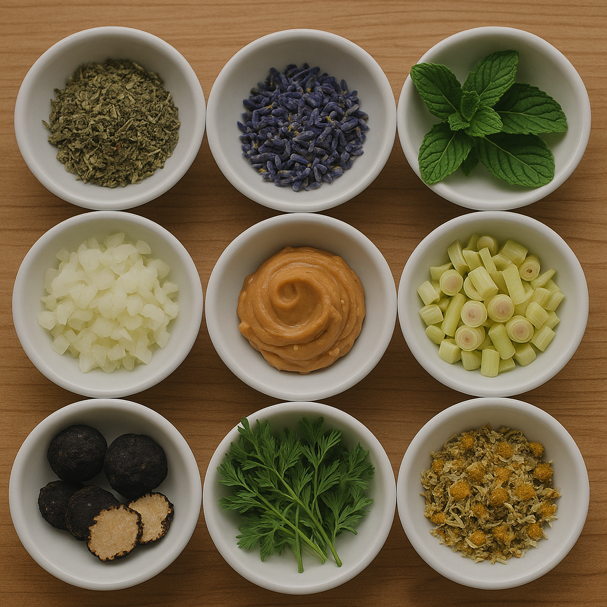A Glimpses of Wonder Entry
It was just a spoonful of peanut butter. I wasn’t trying to do anything special — just being a kid, enjoying a snack, hovering near my hamster’s tank. He was asleep, of course. Hamsters are like tiny, grumpy old men in fur coats who hate being disturbed before sundown.
But then I breathed.
Just a soft exhale through the wire cover, and suddenly the wood chips stirred. Not much, just a twitch — then a nose, rising like it was being drawn by invisible threads. It hovered there in the air, sniffing like it had a mission from above. That little pink triangle didn’t come charging out, didn’t make a sound — it just followed the scent, nose-first, as if the peanut butter had put a string on its soul.
At the time, I didn’t think of it as anything more than funny. But now? I realize I was watching a kind of “nip moment.”
We tend to think of “nip” as a cat thing — and it is, famously. Catnip contains a chemical called nepetalactone that triggers receptors in a cat’s nose, lighting up their brain like a pinball machine. What follows is unpredictable: some cats roll and chirp, others stalk invisible prey or suddenly decide your hand is made of ham. It doesn’t take much — just a sniff — and they’re off.
But the idea of “nip” isn’t exclusive to cats. In fact, many animals have a scent, substance, or trigger that flips a behavioral switch. Some of those nips are stimulants. Others are calming. But the effect is always dramatic — and designed.
 Dogs, for instance, don’t usually respond to catnip. But give them a whiff of anise — the same stuff that gives licorice its kick — and you might see a whole new side of them. Anise is used in scent work, tracking games, and toy stuffing. Some dogs get goofy. Some get focused. A few get so wound up they need to go run it off.
Dogs, for instance, don’t usually respond to catnip. But give them a whiff of anise — the same stuff that gives licorice its kick — and you might see a whole new side of them. Anise is used in scent work, tracking games, and toy stuffing. Some dogs get goofy. Some get focused. A few get so wound up they need to go run it off.
But that’s not their only “nip.” For many dogs, lavender or valerian root has the opposite effect — easing anxiety, slowing the breath, softening their entire demeanor. One nose, two gears. Just depends on the scent.
Rabbits? Offer them dill, carrot tops, or even the scent of banana, and you might see behavior that looks almost ritualistic — sniffing, circling, standing on hind legs. It’s not quite joy, not quite hunger — but something that clearly matters to them. A trigger.
Horses sometimes react to peppermint or chamomile. Elephants are drawn to lemongrass and ripe bananas, even from great distances. Pigs? Their legendary noses can unearth truffles buried beneath the forest floor — and they’ll do it with the same drive you’d see in a child diving for candy.
And your average rodent — like that sleepy little hamster — doesn’t need a field of flowers to trigger a response. All it takes is the right smell. Peanut butter. Sunflower seeds. A whiff of pumpkin. It doesn’t send them into ecstasy, but it kicks off a whole different chain reaction: wake, sniff, search, find. A kind of built-in treasure hunt.
 That’s the thing about “nip.” It’s not just about being silly or zoned out. It’s about what moves you, on the deepest level. For some animals, it’s play. For others, it’s calm. For still others, it’s the thrill of the chase or the satisfaction of seeking. But in every case, it bypasses thought and hits instinct.
That’s the thing about “nip.” It’s not just about being silly or zoned out. It’s about what moves you, on the deepest level. For some animals, it’s play. For others, it’s calm. For still others, it’s the thrill of the chase or the satisfaction of seeking. But in every case, it bypasses thought and hits instinct.
A scent. A reaction. A moment of purpose.
It’s easy to think this is just animal quirk — a party trick of evolution or an amusing coincidence. But that would miss something profound. The fact that each animal is wired so precisely to respond — not just to food, but to feeling — says something about their design. Their responses are tailored, fine-tuned. A dog isn’t just drawn to anise randomly. A cat isn’t just enchanted by catnip on a whim. These reactions exist because someone intended them to exist.
Jehovah created living things with the ability to experience delight, calm, excitement — all through a breath of air. That’s not just engineering. That’s generosity.
And for us, it’s another invitation to notice. To pause when a cat rolls on the carpet like it just found heaven. To smile when a dog sniffs the wind with sudden joy. To remember a little hamster nose breaking through the shavings, carried on invisible waves of peanut butter.
Even the smallest creatures remind us: sometimes, all it takes to stir a soul… is a scent.
🐾
Sidebar: Why We Call It a “Nip”
The term catnip comes from the plant Nepeta cataria, whose scent flips a switch in a cat’s brain — sometimes gently, sometimes chaotically. Over time, that effect gave rise to the casual word “nip” to describe anything that triggers a noticeable change in behavior with just a trace amount.
 Interestingly, the word “nip” is also used in everyday language for a very small bottle or a tiny sip of alcohol — a little that can go a long way. While that comparison might help explain the sudden mood shift we see in animals after just a whiff of their “nip,” it’s worth saying clearly: we’re not suggesting alcohol is a healthy or harmless source of joy.
Interestingly, the word “nip” is also used in everyday language for a very small bottle or a tiny sip of alcohol — a little that can go a long way. While that comparison might help explain the sudden mood shift we see in animals after just a whiff of their “nip,” it’s worth saying clearly: we’re not suggesting alcohol is a healthy or harmless source of joy.
In fact, the beauty here is in the contrast. Jehovah designed animals to respond to simple, harmless triggers — like a scent from a flower, a puff of herb, or even a trace of peanut butter in the air. It’s a reminder that true joy doesn’t need to come from artificial highs. Sometimes, it just takes a whisper of design to stir the heart — and the paws.
Edited by dljbsp
- Roxessence and Tortuga
-
 1
1
-
 1
1

0 Comments
Recommended Comments
There are no comments to display.
Join the conversation with your brothers and sisters!
You are posting as a guest. If you are already a member, sign in now to post with your existing account.
Note: Your post will require moderator approval before it will be visible.